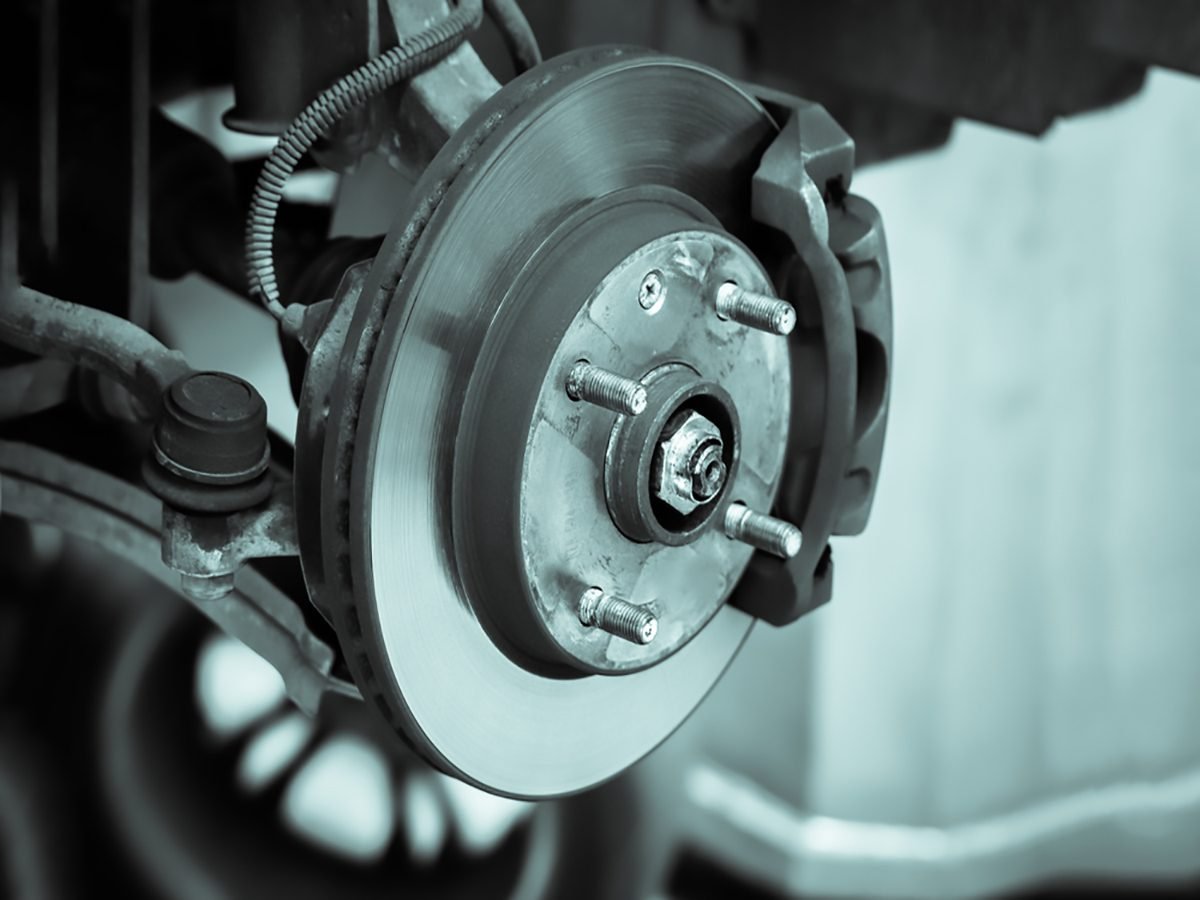
What You’ll Need to Replace a Broken Wheel Stud
Required Tools and Materials for this Project:
Have the necessary tools and materials for this DIY project lined up before you start-you’ll save time and frustration.
* Socket/ratchet set
* Torque wrench
* Tie rod end remover
* Wheel studs
* Steel washers
If you’re just like everyone else, you’ve tightened the lug nuts on your car without using a torque wrench. You’re an “all the muscle you can put into it” kind of guy, and now you’re staring at a broken wheel stud. You can fix this yourself in about an hour and for less than $50. You’ll need to buy a tie rod end remover (OTC No. 7315A, at tooldiscounter.com), or rent one from an auto parts store. Then buy a new stud and two new lug nuts (yes, two of them). Next, stop at the hardware store and get a handful of washers with a hole diameter slightly larger than the threaded portion of the stud.
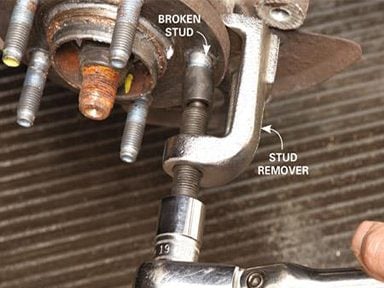
Pull the Broken Wheel Stud
Place the remover around the head of the broken wheel stud, behind the hub. Centre the driving screw over the stud and tighten it with a ratchet until the stud pops out the back.
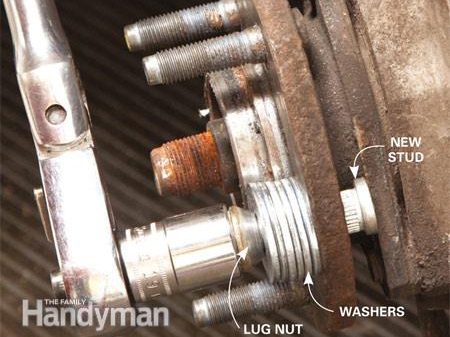
Pull in the New Wheel Stud
Stop tightening when the head of the wheel stud sits flush with the back of the hub. Install the second lug nut (the one you didn’t toss) on the new stud-it’ll go on easier. Tighten with a torque wrench.
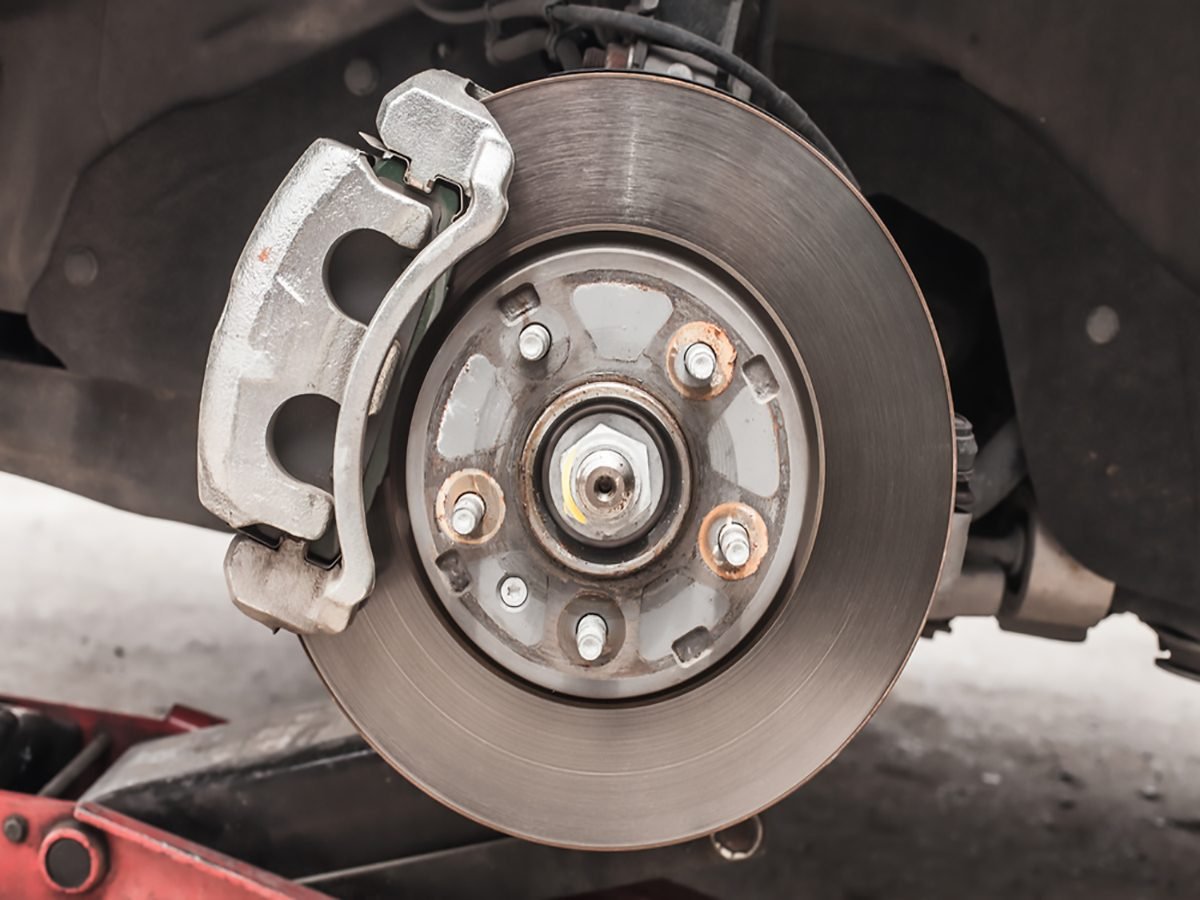
Don’t Hammer Out the Broken Stud
Above all, don’t hammer out the broken stud. That’s the worst thing you can do! The hammer blows can wreck your wheel bearings and turn this into a much bigger repair bill. Instead, squeeze the broken stud out with the remover tool. It’s staked into the hub, so the tough part is getting it to budge. Once it moves, the rest is easy. Rotate the hub until you find a deep recess so you can angle the stud into the hole. Then pull it through. Next, place a bunch of washers over the stud and spin on the lug nut. Crank down on the lug nut to pull the staked portion of the new stud into the hub.
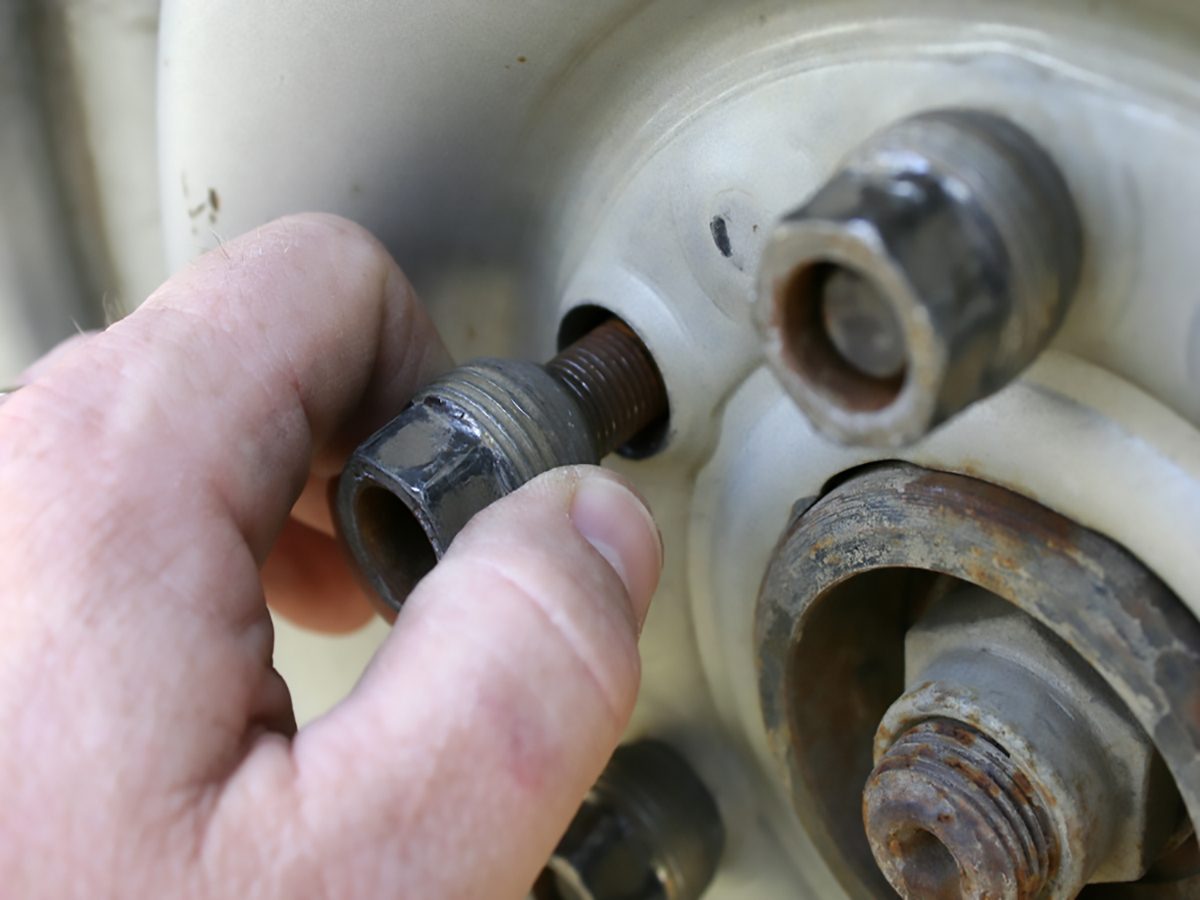
You May Have to Remove the Brake Dust Shield
By this point, you’ve probably stretched the threads or damaged the bevel. So toss the nut (they’re cheap). If you can’t fit the new stud into the hub, you may have to remove the brake dust shield (drill out the rivets and replace them with stainless steel screws, nuts and thread-locking adhesive).
Check out more do-it-yourself car maintenance tips!
Explore Reader’s Digest Cars.